The Hyundai Tucson PHEV isn't Going to Like the Ford Escape PHEV's All-Electric Range originally appeared on Autoblog.
Different styles with similar goals
While both vehicles offer the convenience of plug-in hybrid efficiency, Ford gives the Escape PHEV a clear edge in pure EV driving. With an EPA‑estimated 37 miles of all-electric range, the Escape comfortably outpaces the Tucson PHEV’s 33‑mile rating. That extra four miles may not sound like much, but for commuters who frequently rely on electric power alone, it can mean squeezing in another errand loop without dipping into the gas tank.
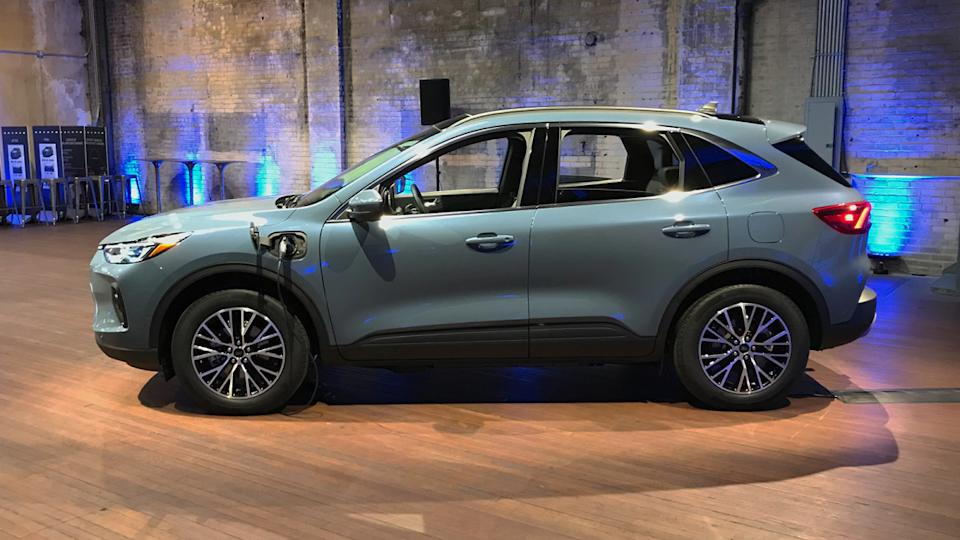
View the 2 images of this gallery on the original article
The Tucson PHEV still shines with Hyundai’s polished interior and refined ride quality, but in this spec-for-spec showdown, the Escape PHEV makes a stronger case for those who want to maximize electric miles before the engine kicks in. Here’s the biggest difference between the two: the Hyundai Tucson PHEV has standard all-wheel drive (AWD), while the Ford Escape PHEV doesn’t even offer AWD. Additionally, the Ford utilizes an eCVT, whereas the Hyundai employs a six-speed automatic.
Externally, they look nothing alike. Ford kept the swoopy, rounded design that feels like an evolution of the Focus and Fusion, with gentle curves and soft edges. Hyundai, on the other hand, went bold and aggressive, using sharp lines, geometric slashes, and angular detailing that almost looks like it came from a concept car. It’s rare to see exterior designs this diametrically opposed in the same segment, but here we are.
Ford clearly wants the Escape PHEV to feel familiar, approachable, and more like a practical family crossover. Hyundai aims for something edgier and more futuristic, which gives the Tucson PHEV more visual personality. However, styling isn’t the only area where they differ. Here’s what else sets these two apart.
2025 Ford Escape PHEV - Base MSRP: $37,400
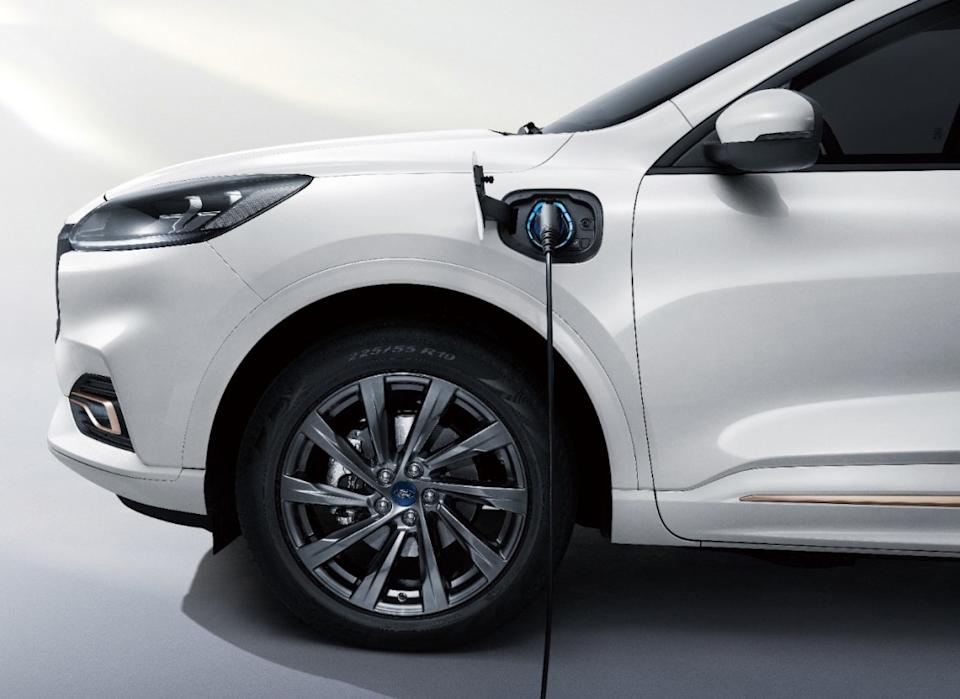
The Escape PHEV combines a 2.5-liter Atkinson-cycle engine with an electric motor, resulting in a total of 210 horsepower. This power is paired with an eCVT (Electronic Continuously Variable Transmission) that utilizes a planetary gearset to balance power from both the gas and electric systems.
All‑electric range: 37 miles
Fuel economy: 40 mpg combined / 105 MPGe
Battery: 4.4 kWh lithium‑ion
Charging: ~3.5 hours on Level 2 (240V), ~10.5 hours on a household outlet
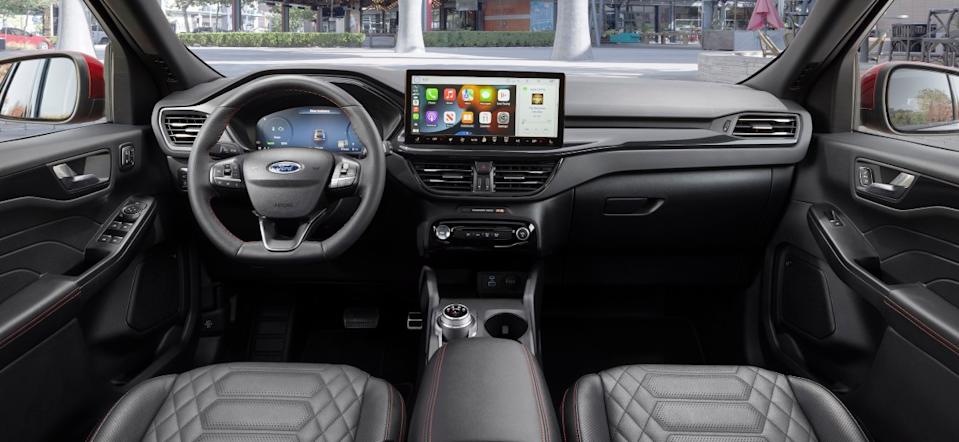
View the 2 images of this gallery on the original article
The interior is comfortable and practical, if a bit plain. There’s plenty of rear seat space, and seat comfort is better than average. A 13.2‑inch SYNC 4 touchscreen sits prominently on the center stack. Cargo space is substantial, with 34.4 cu-ft behind the rear seats, expanding to 60.8 cu-ft with the seats folded down.
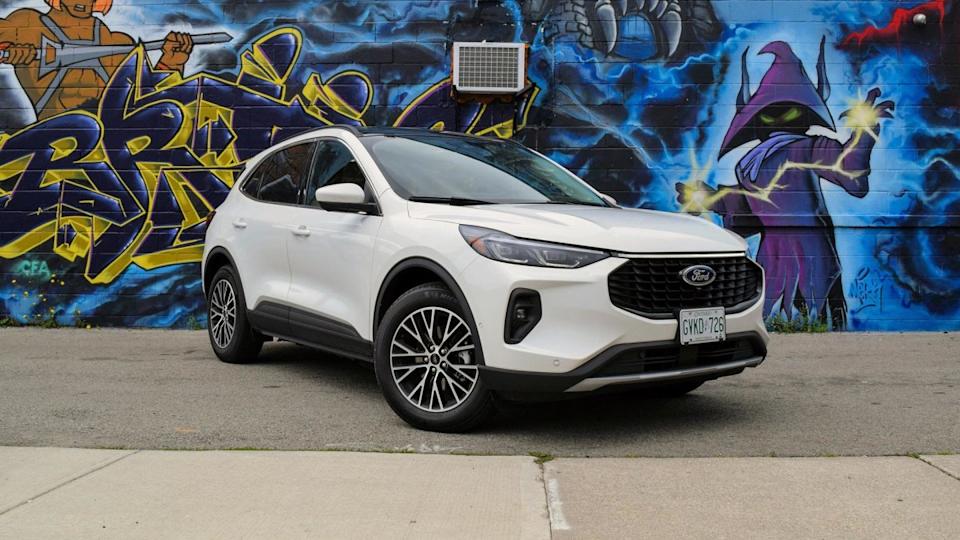
Driving the Ford Escape PHEV
Driving the Escape PHEV is calm and easygoing. The handoff between EV and gas power is smooth and nearly seamless, making it a great commuter. Acceleration is adequate, though under heavy throttle, you’ll hear the engine—like a background noise you can’t quite ignore. Handling is competent, but not engaging. It’s tuned for comfort, not sporty driving. Since it doesn’t offer AWD, it’s not ideal for poor weather or rougher terrain, even though it sits slightly higher than a typical hatchback.
2025 Hyundai Tucson PHEV - Base MSRP: $39,730
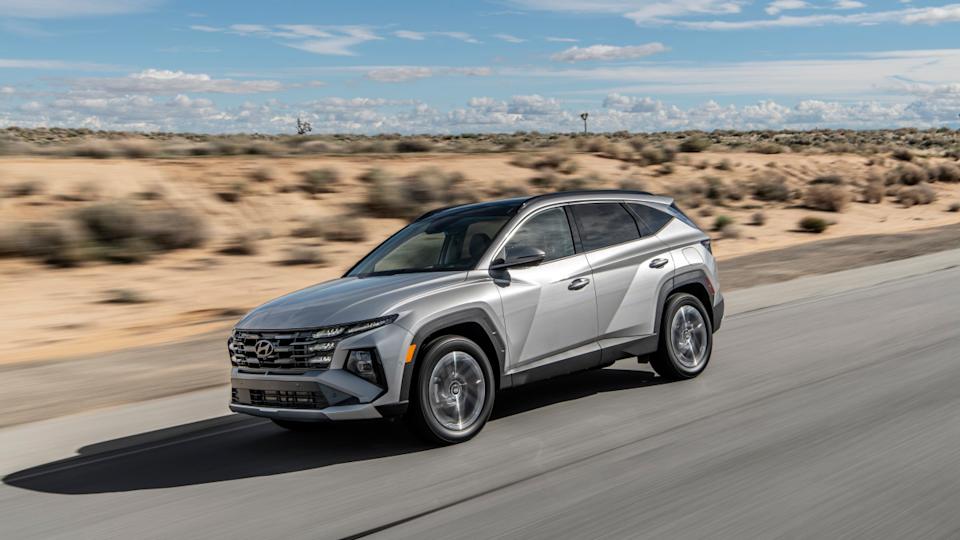
The Tucson PHEV pairs a 1.6‑liter turbocharged engine with an electric motor for a combined 261 horsepower. Unlike the Escape, it features a 6-speed automatic transmission and comes standard with AWD.
All‑electric range: 33 miles
Fuel economy: 35 mpg combined
Battery: 13.8 kWh lithium‑ion polymer
Charging: ~2 hours on Level 2 (240V), ~6–10 hours on a household outlet
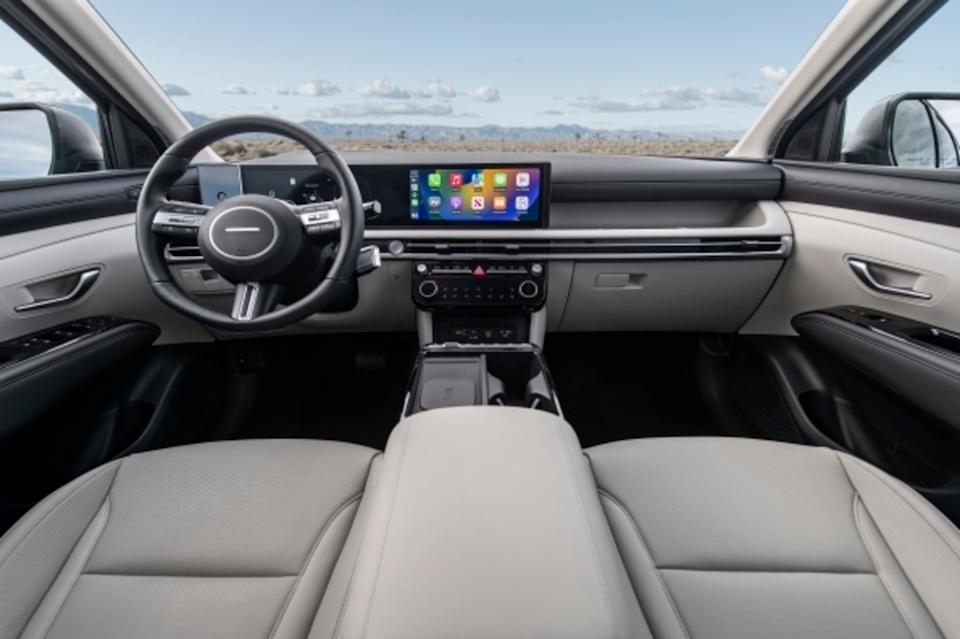
View the 2 images of this gallery on the original article
Inside, the Tucson feels more premium. Seats are nicely bolstered and comfortable, and the design is more modern and upscale. Dual 12.3‑inch digital screens dominate the cabin, with crisp graphics and wireless Apple CarPlay/Android Auto. Rear seating is roomy, though cargo space is slightly tighter at 31.9 cu‑ft behind the rear seats, maxing out at 66.3 cu‑ft with the seats folded.
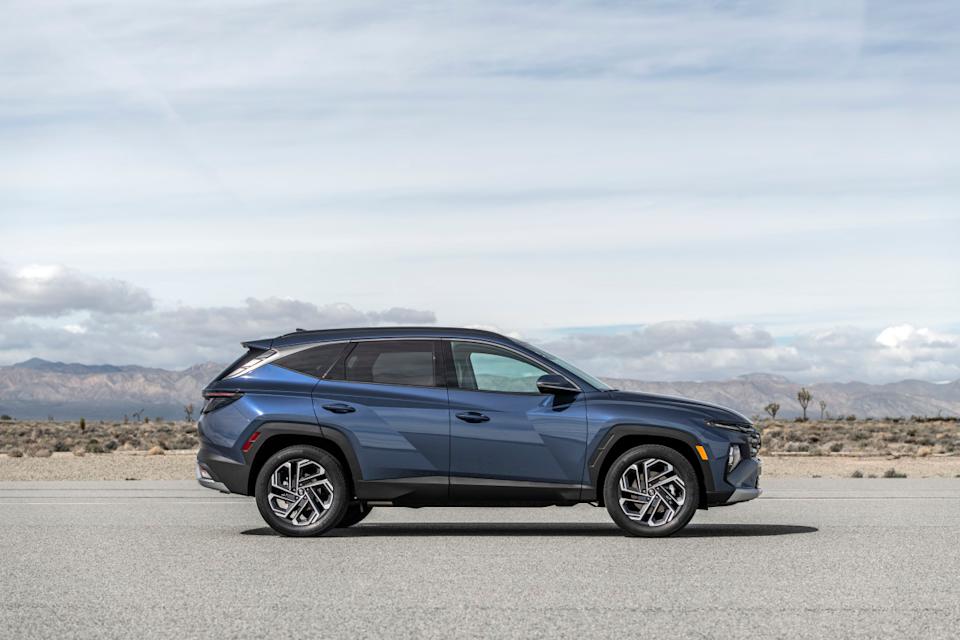
Driving the Hyundai Tucson PHEV
Compared to the Escape, the Tucson PHEV feels more powerful and engaging. It has more torque, better acceleration, and thanks to e‑handling technology, it can shift torque between the rear wheels during cornering for better grip.
Ride quality is refined and stable, with good steering feedback for a plug‑in crossover. The downsides? A slight lag from the turbo engine and a bit of hesitation when switching from EV to gas power. Still, it feels more athletic and confident on the road than the Escape.
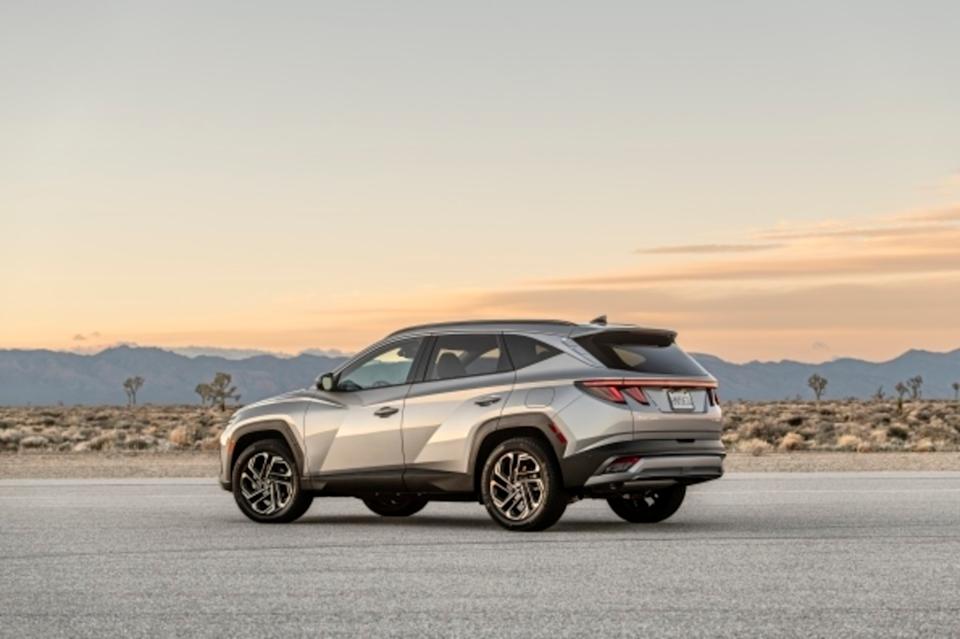
View the 2 images of this gallery on the original article
Final thoughts
This comparison really comes down to value vs. driving engagement. The Ford Escape PHEV is more affordable, offers longer EV range, and is the better choice for pure efficiency—but it lacks AWD and driving excitement. The Hyundai Tucson PHEV is more powerful, better equipped for all-weather conditions, and feels more premium inside, but it’s pricier and slightly less efficient. Both are solid picks, but they serve slightly different needs. A back-to-back test drive will make it clear which one fits your lifestyle better.
The Hyundai Tucson PHEV isn't Going to Like the Ford Escape PHEV's All-Electric Range first appeared on Autoblog on Jul 30, 2025
This story was originally reported by Autoblog on Jul 30, 2025, where it first appeared.
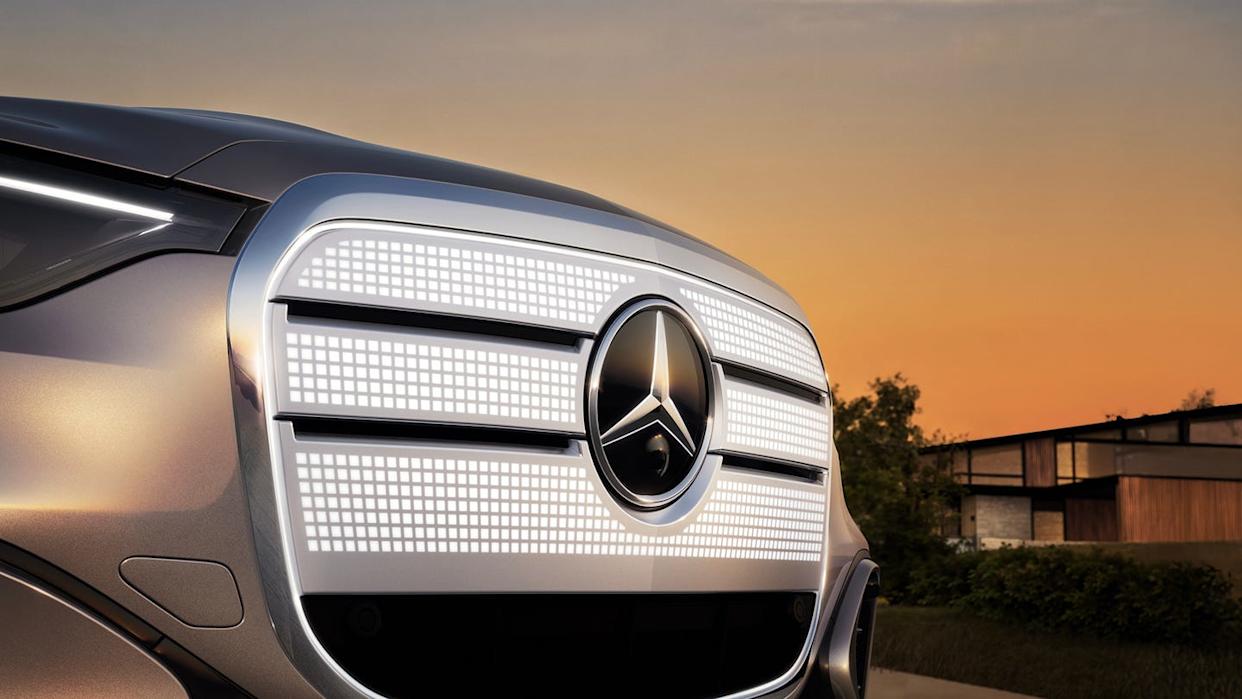


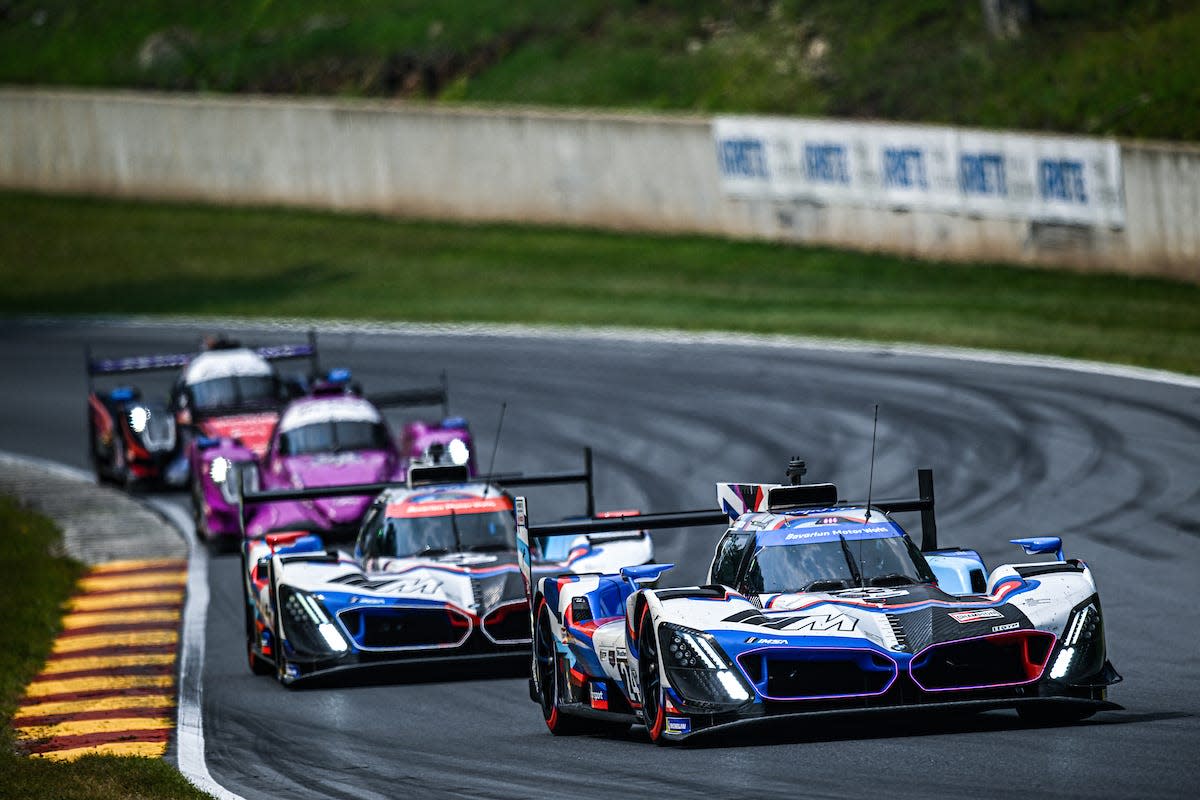
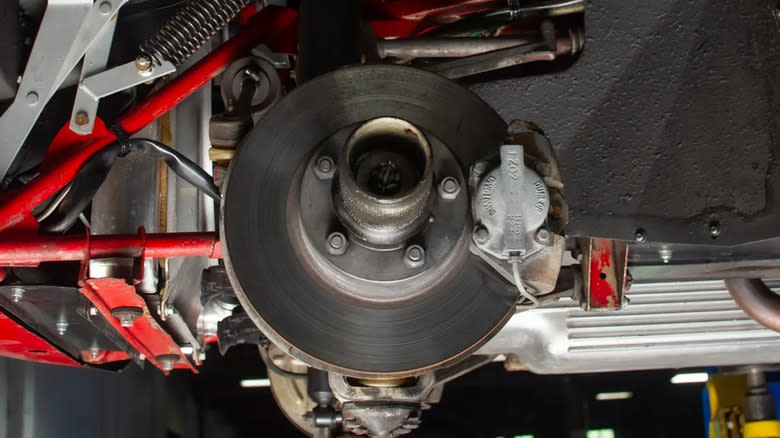
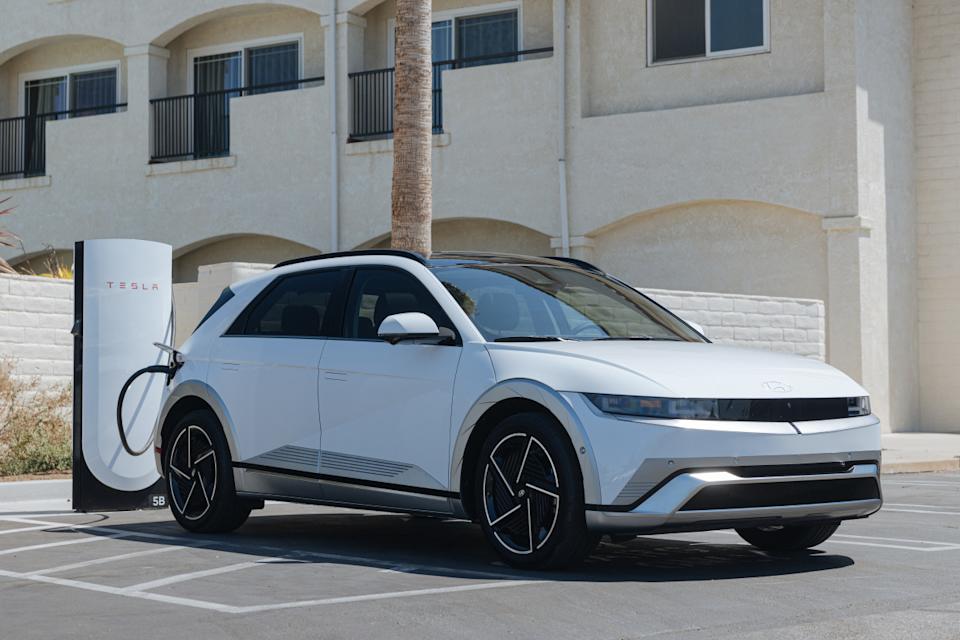

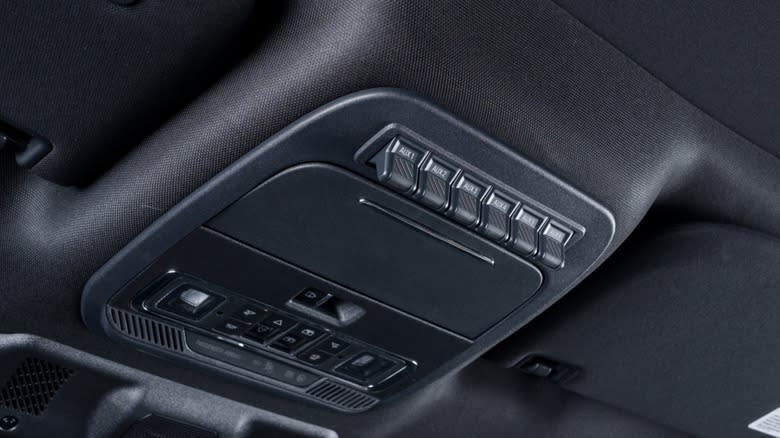
Comments